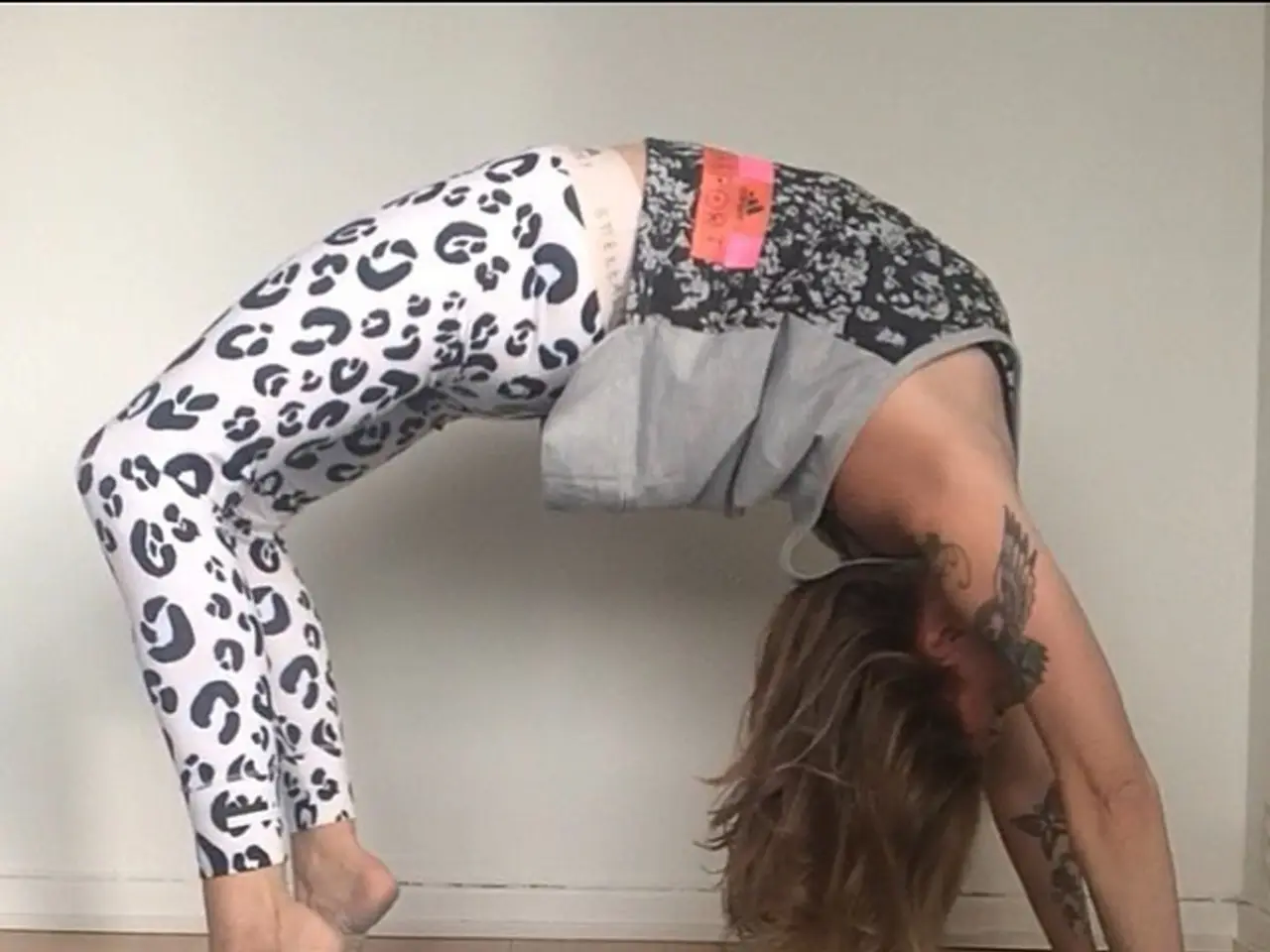Strategies and techniques for enhancing your spinal alignment and overall body positioning
In today's digital age, maintaining good posture has become more important than ever. The National Institutes of Health (NIH) recommends being mindful of posture during everyday activities, and various sources like the American Chiropractic Association, yoga practices, and the NIH have provided effective tips and exercises to help us achieve this.
When sitting at a desk or table, proper posture includes sitting with a straight back and shoulders back, keeping feet flat on the floor, not crossing legs or ankles, and resting forearms on the table while keeping shoulders back. It's also crucial to ensure that your chin is parallel to the floor, and your ears align with your collar bone.
While standing, one should have their feet flat on the floor shoulder width apart, stand tall, pull their belly button towards their spine, keep their chin parallel with the floor, and let their arms relax by their sides. General tips for good posture include keeping shoulders back and chest forward, holding the head upright, avoiding twisting at the waist, and distributing body weight evenly among both feet and hips.
Sitting for many hours may cause slouching, putting stress on the neck and constricting the lungs. To counteract this, it's recommended to switch sitting positions often, avoid crossing legs or ankles, keep shoulders relaxed, and avoid twisting at the waist. Taking frequent breaks to stand, stretch, or walk short distances can also help avoid muscle tightness and fatigue.
When lying down, it's essential to maintain the natural curve of your spine. Avoid sleeping on your stomach as it strains the neck. Use a supportive pillow to keep your head aligned with your spine, and when lying on your back, place a small pillow under your knees to relieve lower back pressure. When lying on your side, placing a pillow between your knees can help align the hips and spine.
Effective exercises and yoga poses to improve posture include the child’s pose, seated spinal twist, downward dog, sphinx pose, happy baby pose, forward fold, and figure 4 piriformis stretch. These exercises help relax, stretch, and strengthen various muscles, improving posture and reducing muscle strain.
Chiropractors can also recommend posture-specific exercises that retrain muscles for better support and alignment. Gentle stretches targeting the lower back with guided breathing can relieve tension and improve posture over time.
By incorporating these posture tips and exercises into your daily routine, you can reduce muscle strain, prevent joint pain, and improve overall comfort and confidence. Good posture can also provide several health benefits, such as reduced back pain, decreased risk of injury, lower stress on muscles and joints, improved circulation, digestion, respiration, and flexibility.
So, let's strive for better posture and reap the rewards of a healthier, more comfortable, and more confident life!
- In the child’s pose, a yogic exercise, individuals can help improve their posture and reduce muscle strain.
- As suggested by the National Institutes of Health (NIH), people should be mindful of their posture even when lying down, maintaining the natural curve of their spine.
- During health-and-wellness and fitness-and-exercise activities, it's vital to implement good posture practices such as keeping shoulders back and standing tall.
- Chiropractors can guide you with posture-specific exercises that employ gentle stretches to strengthen muscles, providing better support and alignment, especially for those with asthma or other related conditions.




